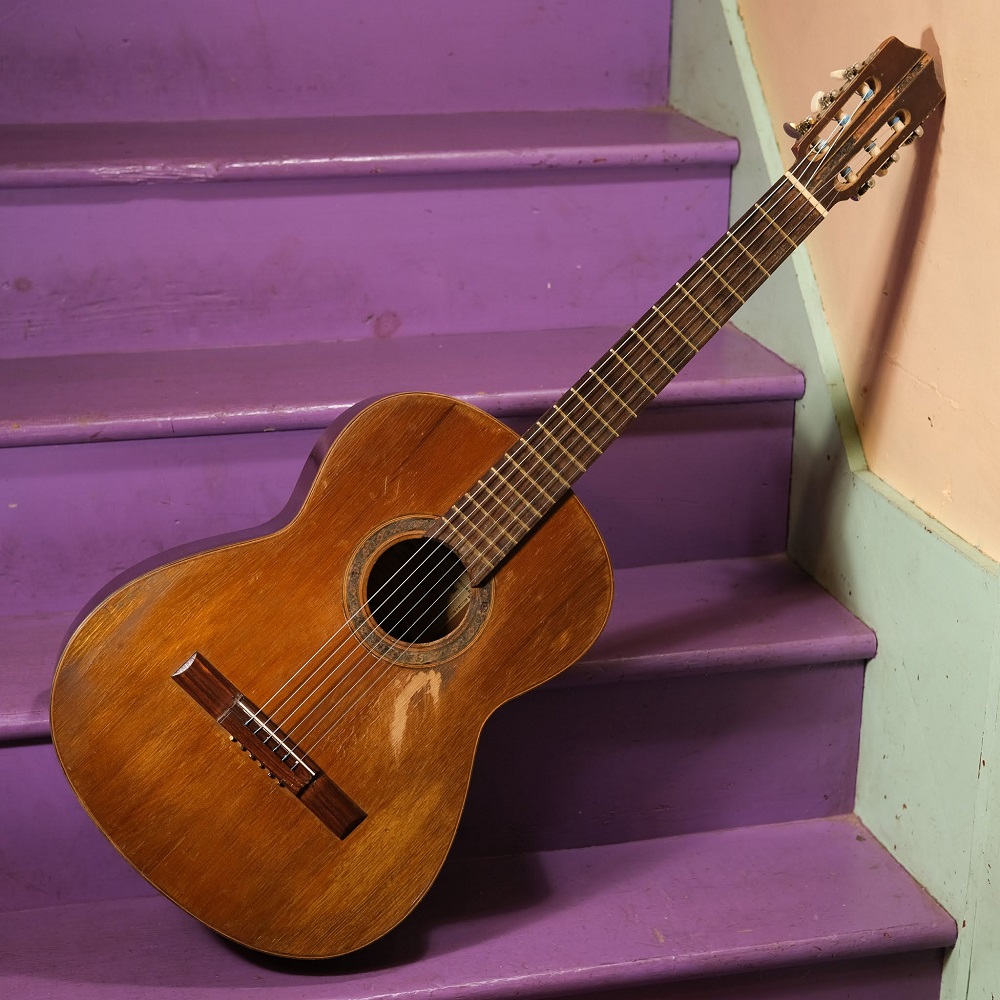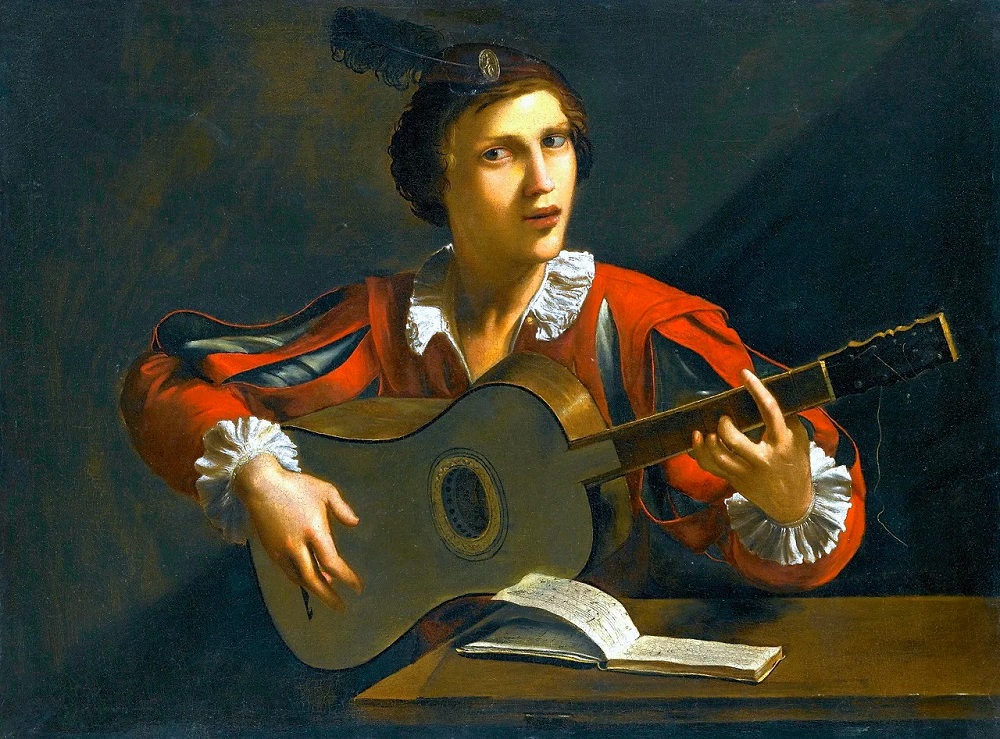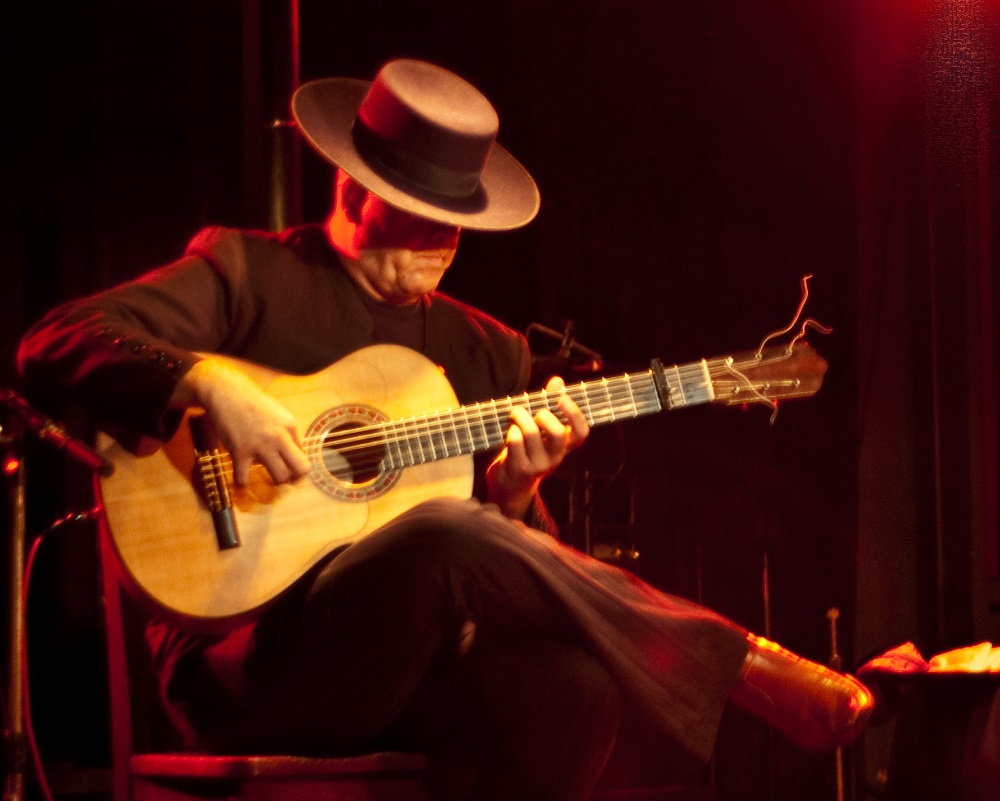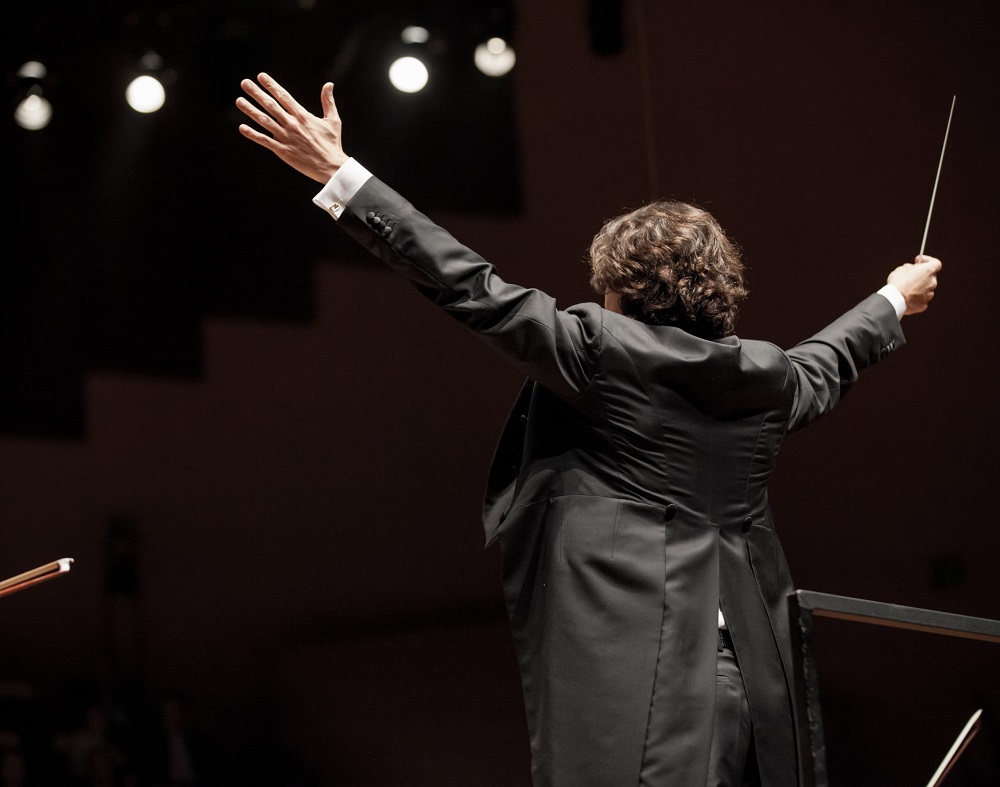The Spanish guitar, known for its acoustic guitar characteristics and unique playing techniques, has enchanted audiences for centuries. This versatile instrument transcends musical genres and cultures, offering a rich tapestry of sound that continues to inspire. Join us as we explore its history, music, and the artists who have made it a timeless symbol of creativity and passion.
Table of Contents
- What is a Spanish Guitar?
- How to Play the Spanish Guitar
- Music for the Spanish Guitar
- Spanish Guitar vs. Acoustic Guitar: What’s the Difference?
- Learning to Play the Spanish Guitar


Lucía Anaya
Meet Lucía Anaya, the voice behind this exploration of the Spanish guitar. Hailing from Seville, the heartland of flamenco, Lucía is not only a passionate writer but also a flamenco dancer in her free time. Her connection to the music and culture of Spain brings an authentic and vibrant perspective to her writing.
What is a Spanish Guitar?
Spanish Guitar: More Than an Acoustic Guitar
The Spanish guitar is a beautiful instrument, celebrated for its soft and warm sound that resonates with the soul.
At first glance, it may look like a regular acoustic guitar, but the use of nylon strings instead of steel ones sets it apart. These nylon strings create a unique sound that’s rich and expressive, making it the instrument of choice for romantic serenades and classical compositions.


Its gentle tones can evoke emotions and transport listeners to the scenic landscapes of Spain, where the guitar’s tradition has been nurtured for centuries. Whether played in a concert hall or a cozy living room, the Spanish guitar’s enchanting sound continues to captivate hearts and inspire love for music.
You can learn about its origin, the flamenco, here: Flamenco’s Enigmatic Symphony: A Brit’s Sojourn Through the Vortex of Passion
A Brief History About the Spanish Guitar
The Spanish guitar boasts a rich and storied history, tracing its lineage back to older instruments like the lute, which were played in the royal courts and plazas of ancient Spain. Over the centuries, it has evolved, absorbing the cultural essence of the regions it touched, and has become an integral part of Spanish culture and identity.


Today, the Spanish guitar is not confined to its homeland; it’s played all over the world, resonating with diverse audiences. Its timeless melodies and unique construction have transformed it into a symbol of Spanish musical tradition, a bridge that connects the past with the present, and a universal language that speaks to the heart, regardless of geographical boundaries.
How to Play the Spanish Guitar
Techniques for Playing the Spanish Guitar
Playing the Spanish guitar is an art form that distinguishes itself from playing a regular guitar. Musicians delicately use their fingers to pluck the strings, often growing their fingernails to achieve the right sound, a practice that adds a personal touch to their performance.
The Spanish guitar invites players to explore a world of techniques, each offering a different shade of emotion and expression. From gentle caresses to vigorous strums, the fingers dance on the strings, creating melodies that can be both tender and fiery. While mastering these techniques may seem daunting at first, the journey is filled with discovery and joy. With practice, patience, and a love for music, anyone can unlock the Spanish guitar’s potential and play beautiful music that resonates with listeners.


It’s an instrument that welcomes all, from the novice strumming their first chords to the seasoned virtuoso, and offers a lifelong path of musical exploration and fulfillment.
Famous Spanish Guitar Players
Some famous Spanish guitar players, such as the legendary Andrés Segovia and the virtuoso John Williams, have elevated this instrument to global acclaim, turning it into a symbol of artistic excellence.
Through their mastery, passion, and innovation, they’ve shown that the Spanish guitar is not merely an instrument but a powerful tool for creating amazing music that transcends boundaries. Their performances, filled with emotion and technical brilliance, have inspired generations of musicians and listeners alike.
By embracing the Spanish guitar’s rich heritage and exploring new horizons, they’ve woven a tapestry of sound that connects cultures, celebrates human creativity, and continues to resonate in concert halls, recordings, and hearts around the world. Their legacy is a testament to the Spanish guitar’s timeless beauty and its endless capacity to touch souls and ignite imaginations.
Music for the Spanish Guitar
Famous Pieces for the Spanish Guitar
The Spanish guitar has been the muse for countless composers and musicians, inspiring a diverse and beautiful array of music that spans genres and generations. From the intricate classical concertos that showcase its expressive range to the modern pop songs that infuse contemporary rhythms with its timeless charm, this instrument has proven its versatility and universal appeal.
If you’ve ever been captivated by the famous ‘Concierto de Aranjuez,’ composed by Joaquín Rodrigo, you’ve experienced the magic of the Spanish guitar. Its haunting melody and rich harmonies transport listeners to the gardens of Spain, painting a sonic landscape filled with emotion and elegance.


Whether in the hands of a master or a beginner, the Spanish guitar has the power to create music that resonates with the human experience, connecting us to our shared passions, memories, and dreams. It’s an instrument that invites exploration and rewards with endless musical possibilities, a bridge between tradition and innovation, and a voice that speaks to the heart.
Spanish Guitar: Its Influence on Other Music
The Spanish guitar is a versatile and enchanting instrument that transcends the boundaries of classical music. Its unique sound, characterized by the warmth and resonance of its nylon strings, has found a home in jazz, where it adds a touch of elegance to improvisations; in rock, where it infuses energy and soul; and even in pop music, where it brings a timeless quality to modern melodies.
Musicians across genres have embraced the Spanish guitar, recognizing its ability to add a special touch that elevates and enriches any musical style. Its presence can be felt in iconic songs and experimental compositions alike, a testament to its adaptability and enduring appeal. Whether strumming the chords of a love ballad or plucking the notes of a complex jazz solo, the Spanish guitar weaves its magic, connecting with listeners and adding a layer of depth and emotion that only it can provide.


It’s an instrument that celebrates diversity and unity in music, a bridge between the old and the new, and a voice that continues to inspire creativity and joy.
Spanish Guitar vs. Acoustic Guitar: What’s the Difference?
Look and Feel: Spanish Guitar vs. Acoustic Guitar
While they may appear similar at first glance, the Spanish guitar and the acoustic guitar possess distinct characteristics that set them apart and give each its unique voice:
- The Spanish guitar, often associated with romance and tradition, is strung with nylon strings, which produce a softer, warmer sound that can evoke feelings of nostalgia and intimacy.
- In contrast, the acoustic guitar, versatile and vibrant, uses steel strings that create a brighter, more resonant sound, lending itself to a wide range of musical styles.
These differences in string material not only affect the instruments’ tonal quality but also their playability and the emotions they convey. Whether it’s the gentle caress of a Spanish guitar serenade or the lively strum of an acoustic guitar in a folk song, each instrument offers a different musical experience, reflecting the diversity and richness of the world of guitars.
It’s a subtle yet profound distinction that speaks to the craftsmanship, history, and artistic potential of these beloved instruments, each with its own story to tell and song to sing.


Playing Styles: Spanish Guitar vs. Acoustic Guitar
If you are drawn to the soul-stirring melodies of classical or romantic music, the Spanish guitar, with its soft and expressive tones, is the way to go. Its nylon strings and unique construction allow for a depth of emotion that resonates with the timeless beauty of these genres.
On the other hand, if you prefer the energetic rhythms of folk or the driving beats of rock, an acoustic guitar, known for its bright and versatile sound, might be a better choice. Its steel strings and robust build make it a favorite among contemporary musicians.


Both the Spanish guitar and the acoustic guitar are great instruments, each with its own character and charm, but they offer different experiences that align with various musical tastes and aspirations.
Whether you’re a budding musician exploring your first chords or an experienced player seeking new challenges, the choice between these two guitars opens doors to diverse musical worlds, each filled with opportunities for creativity, expression, and enjoyment. It’s a decision that reflects not just a preference for a particular style but a connection to the music that speaks to your heart.
Learning to Play the Spanish Guitar
How to Start Playing the Spanish Guitar
Embarking on the path to learn the Spanish guitar is a fun and rewarding journey, filled with discovery, creativity, and personal growth. Whether you choose to take lessons from a skilled teacher, watch online tutorials from the comfort of your home, or even teach yourself through books and practice, the Spanish guitar welcomes you with open arms.
It’s an instrument that encourages exploration, offering a rich repertoire that ranges from classical masterpieces to modern compositions. With patience, practice, and a passion for music, you’ll find yourself playing beautiful melodies in no time, connecting with the instrument’s soul and expressing your own emotions through its strings.
The journey to master the Spanish guitar is not just about acquiring skills; it’s about building a relationship with an instrument that has inspired artists for centuries. It’s a path that offers endless possibilities, challenges that inspire growth, and the joy of creating music that resonates with listeners.
Whether you’re a beginner taking your first steps or an experienced player seeking new horizons, the Spanish guitar awaits, ready to be your musical companion and guide.
Tips for Beginners Playing the Guitar
If you’re new to the Spanish guitar, don’t worry! Embarking on this musical adventure is an exciting and fulfilling experience that welcomes learners of all levels. But following these steps:
- Start with simple scales and tunes that allow you to become familiar with the instrument’s feel and sound.
- Practice regularly, embracing each small progress as a step towards mastery, and don’t be afraid to ask for help from teachers, fellow musicians, or online communities.
- Remember, every great guitarist, from legends like Andrés Segovia to contemporary masters, was once a beginner too. They all started with the same basic chords and worked their way up, fueled by passion and persistence.
- Have into account that your journey with the Spanish guitar is a personal and unique path, filled with opportunities to explore, learn, and grow. Embrace the challenges, celebrate the achievements, and let the music guide you.
The Spanish guitar is not just an instrument; it’s a friend that accompanies you, a teacher that inspires you, and a voice that allows you to express yourself. With dedication and joy, you’ll soon be playing beautiful music that reflects your own creativity and connects with others.
The Spanish guitar is a wonderful instrument with a rich history and a beautiful sound. Whether you’re a listener or a player, there’s something about the Spanish guitar that touches the heart. From its unique playing techniques to its influence on music around the world, the Spanish guitar continues to enchant and inspire.







